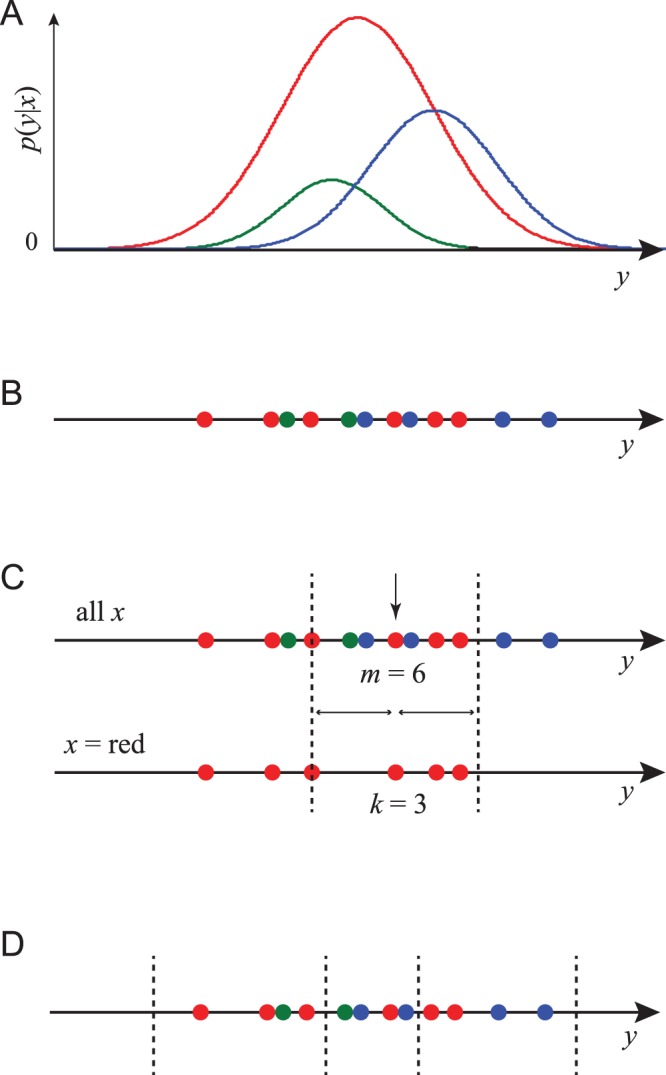Figure 1. Procedures for estimating MI.

(A) An example joint probability density  where
where  is a real-valued scalar and
is a real-valued scalar and  can take one of three values, indicated red, blue and green. For each value of
can take one of three values, indicated red, blue and green. For each value of  the probability density in
the probability density in  is shown as plot of that color, whose area is proportional to
is shown as plot of that color, whose area is proportional to  . (B) A set of
. (B) A set of  data pairs sampled from this distribution, where
data pairs sampled from this distribution, where  is represented by the color of each point and
is represented by the color of each point and  by its position on the
by its position on the  -axis. (C) The computation of
-axis. (C) The computation of  in our nearest-neighbor method. Data point
in our nearest-neighbor method. Data point  is the red dot indicated by a vertical arrow. The full data set is on the upper line, and the subset of all red data points is on the lower line. We find that the data point which is the 3rd-closest neighbor to
is the red dot indicated by a vertical arrow. The full data set is on the upper line, and the subset of all red data points is on the lower line. We find that the data point which is the 3rd-closest neighbor to  on the bottom line is the 6th-closest neighbor on the top line. Dashed lines show the distance
on the bottom line is the 6th-closest neighbor on the top line. Dashed lines show the distance  from point
from point  out to the 3rd neighbor.
out to the 3rd neighbor.  ,
,  , and for this point
, and for this point  and
and  . (D) A binning of the data into equal bins containing
. (D) A binning of the data into equal bins containing  data points. MI can be estimated from the numbers of points of each color in each bin.
data points. MI can be estimated from the numbers of points of each color in each bin.
